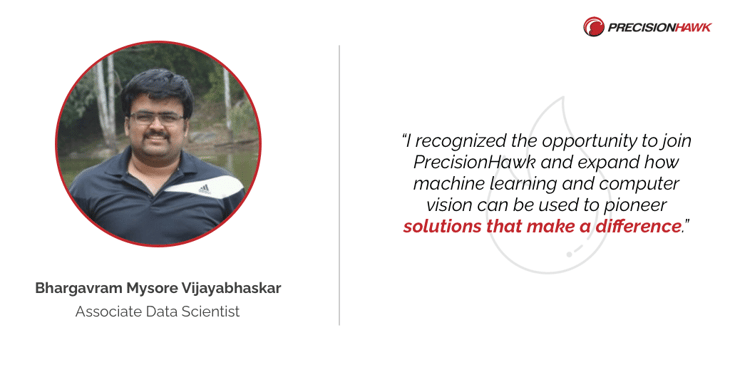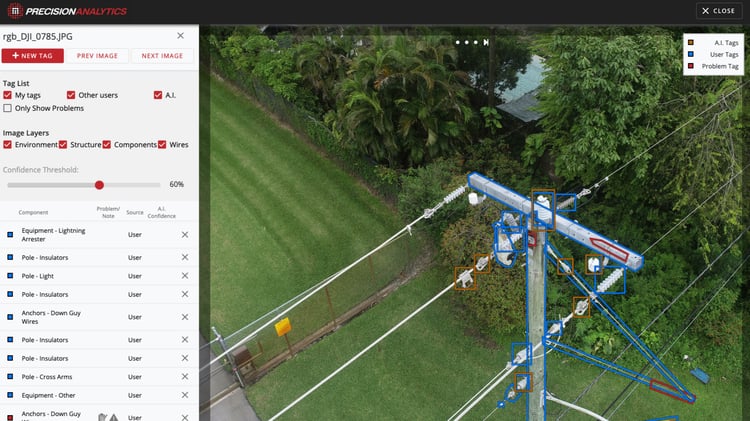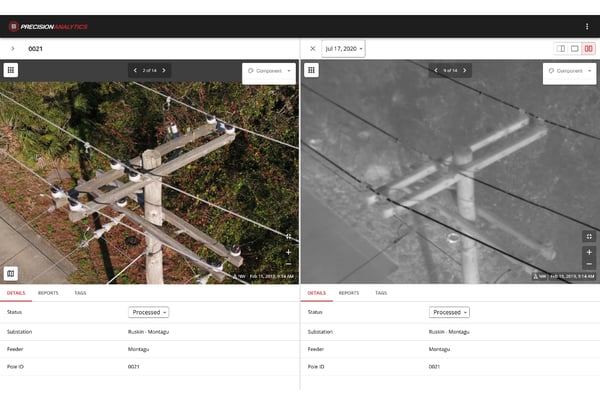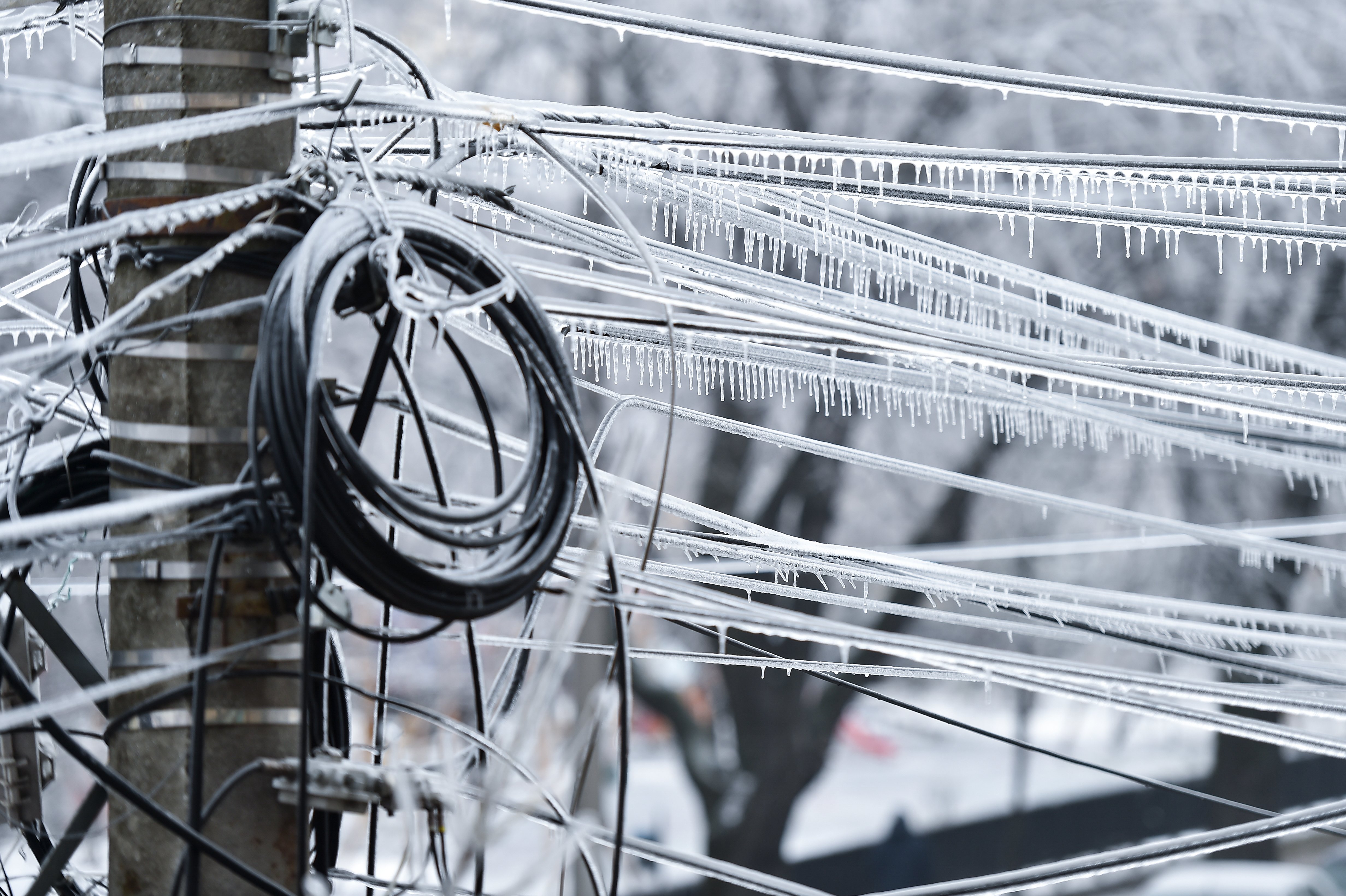Innovation is in our roots—we’ve pioneered best practices in flight operations and geospatial data analysis since our founding in 2010. While we’re experts in blending multiple layers of data sources, our solutions aren’t driven solely by technology. They’re driven by the people of PrecisionHawk.
Today, we spotlight Bhargavram Mysore Vijayabhaskar, Associate Data Scientist. Bhargav works on computer vision and deep learning algorithms, enabling clients to process and analyze collected imagery and data quickly and effectively.

Career Progression: Increasing Human Capacity by Building Scalable Models
After earning a degree in telecommunications from R. V. College of Engineering in Bangalore, India, Bhargav joined the team at Tata Elxsi working on a proof of concept for a fully autonomous vehicle. In this role, Bhargav and his colleagues advanced an emerging technology—a theme that would continue throughout his career.
“I became fascinated with these concepts and their potential application across industries,” says Bhargav. He joined a master’s degree program at North Carolina State University in electrical engineering to study image processing, machine learning, and computer vision.
Deployed correctly, machine learning boosts the processing capacity of organizations and their employees, says Bhargav. Through the use of computer algorithms, data collected through a variety of different methods can be analyzed quickly. “One benefit of this increased capacity is the ability to take action based on that analysis,” says Bhargav.
Assisting a professor in the University’s Department of Crop Science while completing his graduate program, Bhargav developed solutions for optimal fertilizer and pesticide use within the agricultural industry. Bhargav focused on how machine learning could be applied to process and analyze image data collected by unmanned aerial vehicles to identify tree species and the location, density, and elevation of vegetation. By implementing solutions powered by artificial intelligence, farm operators could customize their systems to maximize crop yield and biodiversity.

Bhargav interviewed at PrecisionHawk while concluding his research at NC State. “I immediately saw the similarities between the work of the team at PrecisionHawk to identify the components on utility poles and the applications I developed for the agricultural industry,” says Bhargav.
“I recognized the opportunity to join PrecisionHawk and expand how machine learning and computer vision can be used to pioneer solutions that make a difference,” says Bhargav.
Automatic Annotation: Emerging Trends in Data Science
“The main difference in working in industry compared to working on projects in an academic degree program is that the data sets used in school-based case study projects typically already have clean data,” says Bhargav.
High-quality data must be the starting point for the proper development and implementation of all machine learning applications, says Bhargav. “To develop solutions for our clients, it is critical that we use clean, precise data.”
“One of the problems that exists in data gathering is the relationship between the high quantity of data and the quality of that data,” says Bhargav. A large quantity of visual data requires a significant amount of processing power and time investment, when a subsection of that visual data might be sufficient to develop processing applications.
One trend in data science that is changing how companies structure their data is rapidly accelerating—the development of software solutions powered by machine learning and trained on synthetic data.
“Companies are able to take large data sets—more than 50,000 images—and now, rather than manually process it, they’re able to process it immediately using software customized for their systems.”
-BHARGAVRAM MYSORE VIJAYABHASKAR, ASSOCIATE DATA SCIENTIST
Powered by the machine learning and computer vision algorithms, software solutions allow quick and accurate processing of the entire data set—complete with labels and annotations.
“We’re working to advance this technology each day at PrecisionHawk,” says Bhargav.
Enhancing Algorithms: Processing Thermal Data for Utilities
In the energy industry, a common challenge that utilities face is the early identification of anomalies along distribution or transmission lines—whether those anomalies relate to the location of the poles or the status of the components affixed to them.
“To best process and analyze image and thermal data, the data often needs to be gathered from closer, and multiple, vantage points along the same piece of infrastructure,” says Bhargav. With high-quality data, applications powered by machine learning can process and analyze the data set quickly.
Anomalies that appear visually—like cracked components or a bird’s nest—can be analyzed and annotated for review in an analytics dashboard like PrecisionAnalytics. This is a powerful application of software that enhances a utility’s ability to respond to an anomaly before failure occurs. Yet, for other anomalies, imagery data alone is insufficient, which is why Bhargav worked to develop a solution.

“For example, if a transformer is overheating, the component anomaly would not show up in a regular RGB image, but when you take an image with a thermal camera, the anomaly appears,” says Bhargav.
Hot spot anomalies are easily visible in thermal images, yet with tens of thousands of images to review, utilities accrued significant expense. Bhargav’s solution is an application powered by artificial intelligence that dramatically reduces the time required in reviewing thermal images within a data set.
To develop it, the team first used a method that did not rely on machine learning, manually annotating thermal images that were known to produce a false positive, such as from a car engine or a building in the background. Then, Bhargav incorporated machine learning, training the model to identify these and other anomalies. Bhargav then developed a method to train the model using synthetic data, applying deep learning principles to increase accuracy and recall.
“Our work resulted in a 30 percent decrease in false positives and our solution processes and analyzes large volumes of collected thermal data, without the noise,” says Bhargav.



